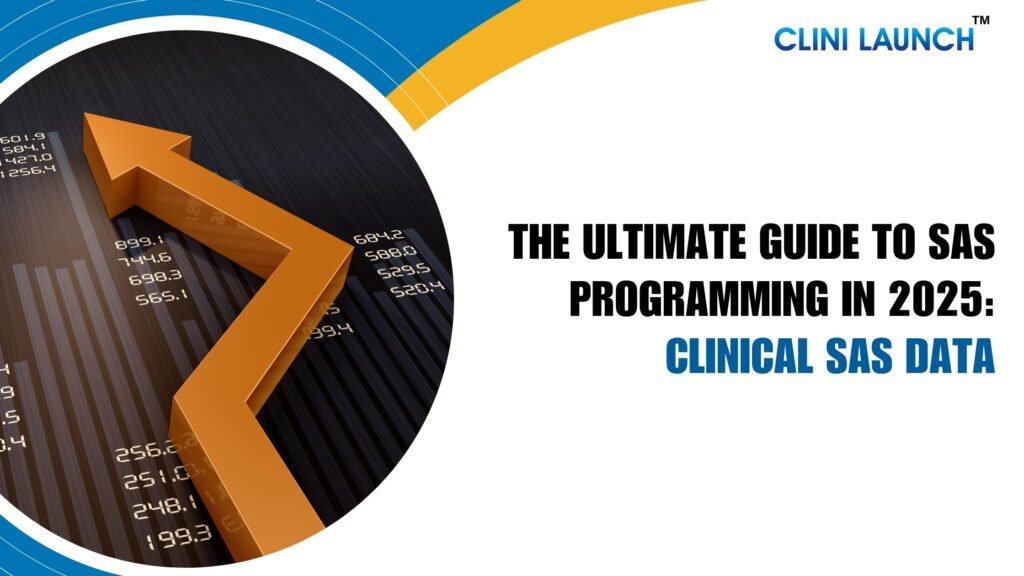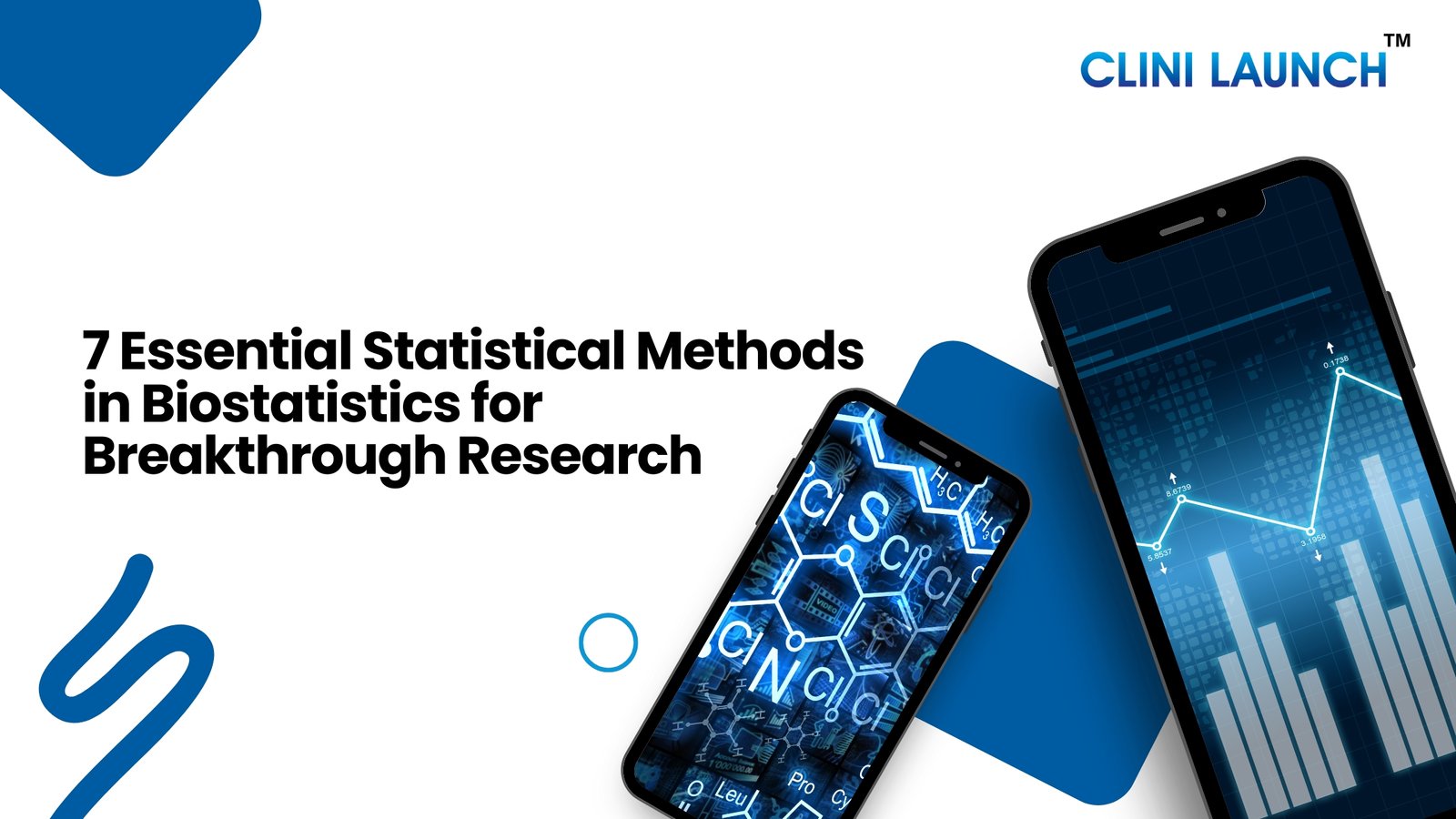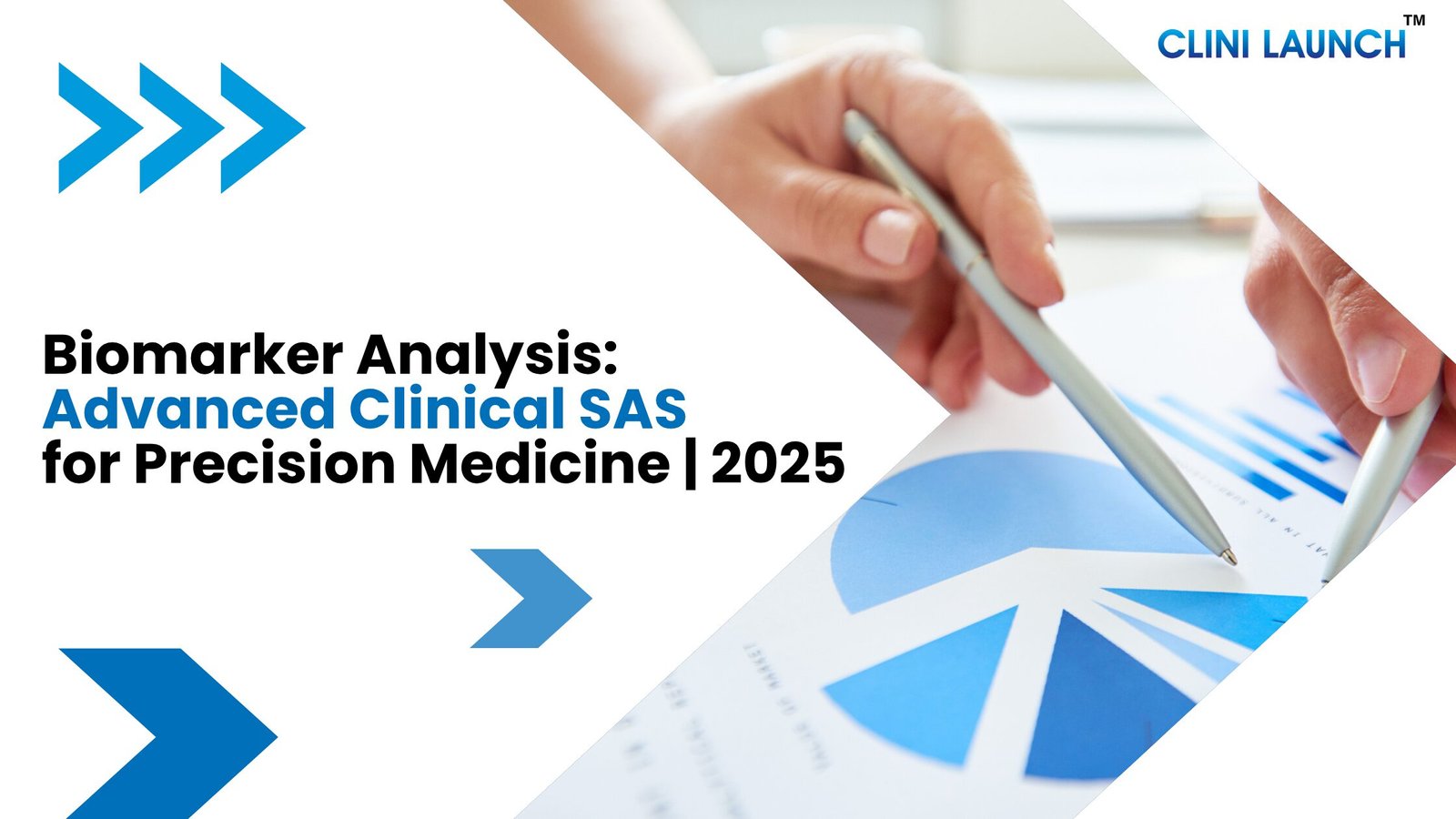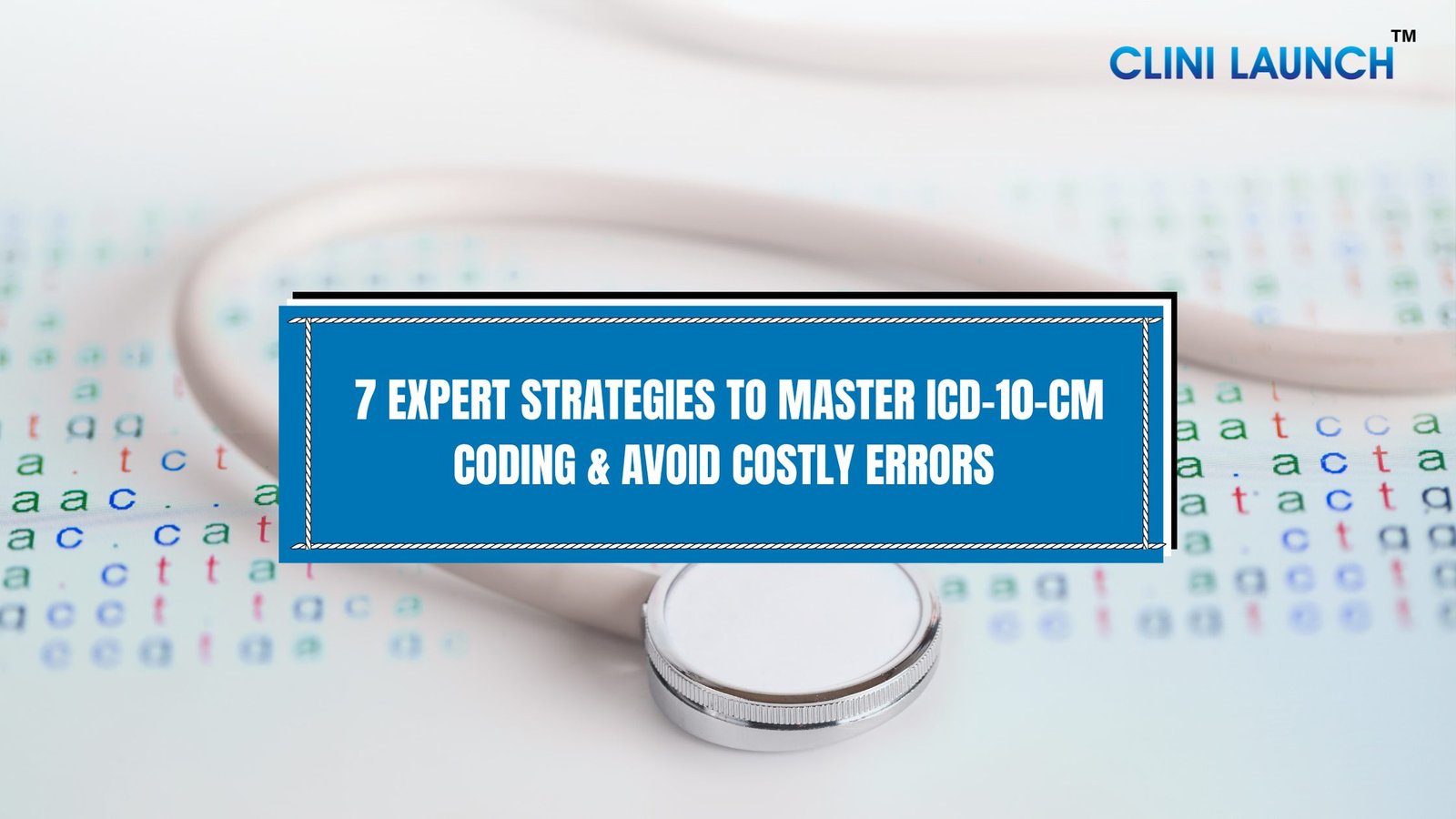The ability to effectively manage, analyze, and interpret vast amounts of data is primary in clinical research. This is where SAS programming emerges as an essential skill, forming the foundation of robust statistical analysis in pharmaceutical, biotechnology, and medical device industries. If you’re looking to elevate your career in clinical research, understanding and mastering SAS is not just an advantage—it’s a necessity.
This comprehensive guide delves into the intricacies of SAS programming within the context of clinical trials, providing you with a foundational understanding of its power and versatility. We’ll explore why SAS remains the gold standard for clinical data analysis, the essential components of a high-quality SAS programming course, and how you can leverage this powerful statistical analysis system to drive impactful insights.
Enroll Now: Clinical SAS course
Leveraging the Statistical Analysis System: Strategic Imperatives for Clinical Data Science
At its core, SAS (Statistical Analysis System) is an integrated suite of software products designed for data management, advanced analytics, multivariate analysis, business intelligence, and predictive analytics. For decades, it has been the preferred choice for regulatory submissions in the clinical domain, including submissions to the FDA (Food and Drug Administration) and other global health authorities. This widespread acceptance is due to several key factors:
- Data Handling Capabilities: Clinical trials generate enormous datasets, often spanning thousands of variables and millions of observations. SAS excels at handling large, complex datasets, offering robust tools for data manipulation, cleaning, validation, and transformation. Its ability to manage missing values, outliers, and data inconsistencies is crucial for maintaining data integrity.
- Standard for Regulatory Compliance: Regulatory bodies worldwide, particularly the FDA, have a long-standing preference for SAS-generated data and reports. This is primarily due to SAS’s rigorous validation processes, comprehensive documentation capabilities, and audit trails, which ensure transparency and reproducibility of analyses. When submitting clinical trial data, SAS significantly streamlines the approval process.
- Statistical Analysis Capabilities: From descriptive statistics to complex survival analyses, mixed models, and non-parametric tests, SAS provides an extensive library of statistical procedures. This allows clinical researchers to perform a wide array of analyses, uncovering significant trends, relationships, and treatment effects from clinical trial data. The precision and reliability of SAS’s statistical algorithms are well-established.
- Robust Reporting and Visualization: Beyond just analysis, SAS offers powerful tools for generating high-quality reports, tables, listings, and figures (TLFs) that are essential for clinical study reports and regulatory submissions. These outputs are highly customizable, ensuring they meet specific reporting standards and clearly communicate findings to diverse audiences.
- Industry-Wide Adoption and Community Support: The common use of SAS in the pharmaceutical and biotech industries means a vast ecosystem of experienced professionals, extensive documentation, and active user communities. This provides invaluable support for troubleshooting, best practices, and continuous learning, making it easier for new professionals to integrate and grow within the field.
In essence, SAS is not just software; it’s an ecosystem that underpins the entire data lifecycle in clinical research, from raw data ingestion to final reporting and regulatory submission.
SAS Programming Fundamentals: A Core Competency for Clinical Data Professionals
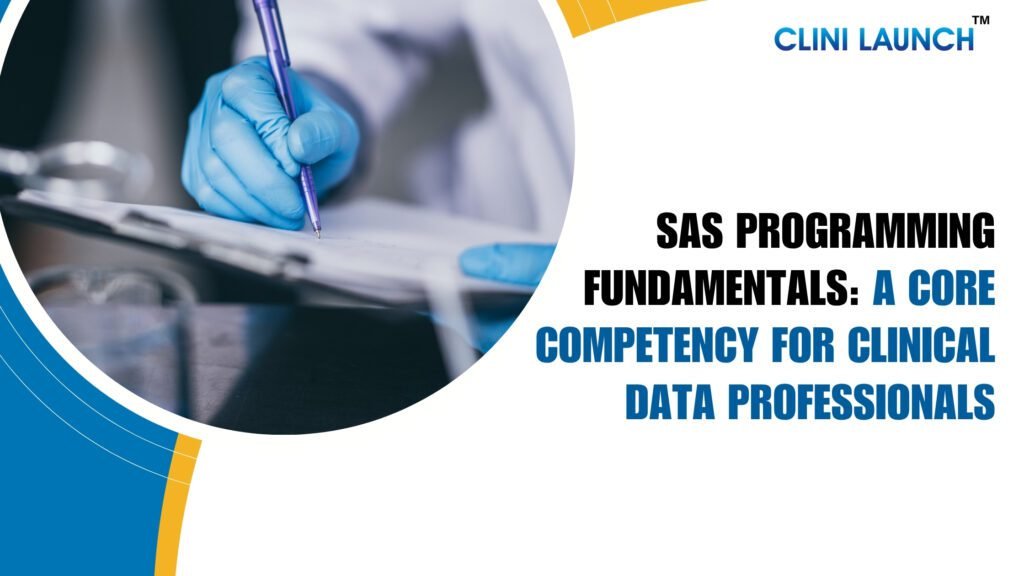
SAS programming involves writing code using the SAS language to perform various data-related tasks. While the idea of programming might seem daunting at first, SAS is known for its relatively straightforward and intuitive syntax, especially for those with a background in statistics or data analysis.
A typical SAS programming workflow in a clinical setting involves several key steps:
- Data Ingestion and Import: Importing data from various sources, such as clinical trial databases (e.g., EDC systems), electronic health records, or external datasets. SAS supports a wide range of file formats, including CSV, Excel, text files, and database connections.
- Data Cleaning and Validation: Identifying and correcting errors, handling missing values, and ensuring data quality. This often involves using DATA steps and various SAS functions to transform and validate variables.
- Data Transformation and Derivation: Creating new variables, combining datasets, merging information from different sources, and reshaping data for analysis. For instance, calculating age from date of birth, deriving composite scores, or transposing data from a wide to a long format.
- Statistical Analysis: Applying appropriate statistical procedures (PROCs) to analyze the data. This is where the power of SAS statistical software truly shines, allowing for everything from simple descriptive statistics (e.g., PROC MEANS, PROC FREQ) to complex inferential analyses (e.g., PROC GLM, PROC MIXED, PROC PHREG).
- Reporting and Output Generation: Creating tables, listings, and figures (TLFs) to present the findings in a clear and concise manner. SAS procedures like PROC REPORT, PROC TABULATE, and ODS (Output Delivery System) are instrumental in generating publication-quality outputs in various formats (e.g., RTF, PDF, HTML).
Understanding the fundamental concepts of SAS data steps, procedures (PROCs), and the Output Delivery System (ODS) is crucial for any aspiring clinical SAS programmer.
Choosing the Right SAS Programming Course
Given the critical role of SAS in clinical research, enrolling in a comprehensive SAS programming course is a strategic move for anyone looking to enter or advance in this field. Not all courses are created equal and choosing the right one can significantly impact your learning journey and career prospects. CliniLaunch offers a clinical SAS course featuring a robust curriculum and practical skill development led by expert trainers.
Here are key considerations when selecting a SAS programming course:
- Clinical Domain Focus: The most effective courses for clinical professionals will have a strong emphasis on real-world clinical trial data and scenarios. Look for curricula that cover CDISC (Clinical Data Interchange Standards Consortium) standards, such as SDTM (Study Data Tabulation Model) and ADaM (Analysis Data Model), which are universally adopted in clinical research for data submission.
- Hands-on Practice and Projects: Theory alone is insufficient. A good course will provide ample opportunities for hands-on coding exercises, practical assignments, and simulated clinical trial projects. This allows you to apply what you learn and build a portfolio of work.
- Experienced Instructors: Seek out instructors who have direct industry experience as clinical SAS programmers or statisticians. Their insights into industry best practices, common challenges, and regulatory requirements are invaluable.
- Comprehensive Curriculum: Ensure the course covers a broad range of topics, including:
- SAS Basics (DATA Step, PROC PRINT, PROC SORT, etc.)
- Data Manipulation and Transformation (MERGE, SET, FORMAT, INFILE, etc.)
- Statistical Procedures (PROC MEANS, PROC FREQ, PROC UNIVARIATE, PROC TTEST, PROC ANOVA, PROC REG, PROC GLM, PROC PHREG, PROC MIXED, PROC NPAR1WAY)
- Macro Programming for Automation
- SQL in SAS (PROC SQL)
- Advanced Reporting using ODS (Output Delivery System)
- CDISC Standards (SDTM and ADaM)
- Pharmacokinetics/Pharmacodynamics (PK/PD) data analysis (if applicable)
- Validation and Quality Control in a GxP environment.
- Certification Preparation: Some courses specifically prepare you for SAS Global Certifications, which can further enhance your credibility and marketability. While not always mandatory, these certifications are widely recognized in the industry.
- Flexibility and Learning Format: Consider whether an in-person, blended, or SAS course online best suits your learning style and schedule. Online courses offer flexibility but ensure they maintain a high level of engagement and support.
The Power of Statistical Analysis Software SAS
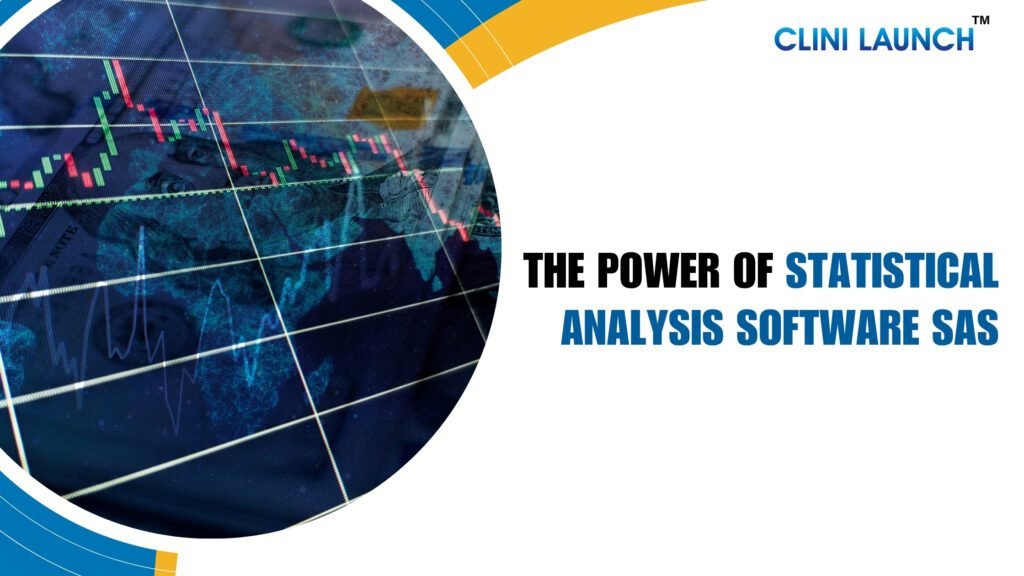
The power of statistical analysis software SAS lies in its ability to transform raw, disparate clinical data into actionable insights. By applying a systematic approach to data analysis, SAS empowers researchers to:
- Assess Treatment Efficacy: Evaluate whether a new drug or treatment significantly improves patient outcomes compared to a placebo or standard of care. This involves hypothesis testing, confidence interval estimation, and power calculations.
- Identify Safety Signals: Monitor and analyze adverse events (AEs), serious adverse events (SAEs), and other safety parameters to identify potential risks associated with a new therapy. This requires careful tabulation and statistical comparison of adverse event rates.
- Characterize Patient Populations: Describe the demographic and baseline characteristics of study participants, which is crucial for understanding the generalizability of study findings.
- Understand Disease Progression: Analyze longitudinal data to track disease progression, treatment response over time, and patient adherence to therapy.
- Support Regulatory Submissions: Generate the precise and validated outputs required by regulatory authorities for drug approval, ensuring compliance and accelerating time to market.
The statistical methodologies employed in clinical trials are often complex, ranging from simple descriptive statistics to advanced survival analysis, mixed models for repeated measures, and non-linear regression. SAS provides robust procedures and flexibility to execute these analyses accurately and efficiently. For example, PROC PHREG is commonly used for survival analysis (e.g., Kaplan-Meier curves and Cox proportional hazards models), while it is often employed for analyzing longitudinal data in clinical trials.
Why Consider a SAS Course Online for Clinical SAS?
The advent of online learning has made acquiring specialized skills like SAS programming more accessible than ever. A SAS course online offers numerous benefits, particularly for busy professionals:
- Flexibility and Convenience: Learn at your own pace, from anywhere with an internet connection. This is ideal for those who balance work, family, or other commitments.
- Global Access to Expertise: Online platforms connect you with instructors and peers from around the world, expanding your learning network and perspectives.
- Cost-Effectiveness: Online courses often have lower tuition fees compared to traditional in-person programs, and they eliminate travel and accommodation expenses.
- Self-Paced Learning: Many online courses are self-paced, allowing you to spend more time on challenging topics and less time on those you grasp quickly.
- Access to Resources: Online platforms typically provide access to a wealth of resources, including lecture recordings, code examples, datasets, and discussion forums.
When opting for an SAS course online, ensure the platform offers practical labs, virtual environments for hands-on coding, and opportunities for instructor interaction and feedback. The quality of support and engagement is crucial for effective online learning.
The Future of SAS Programming in Clinical Research
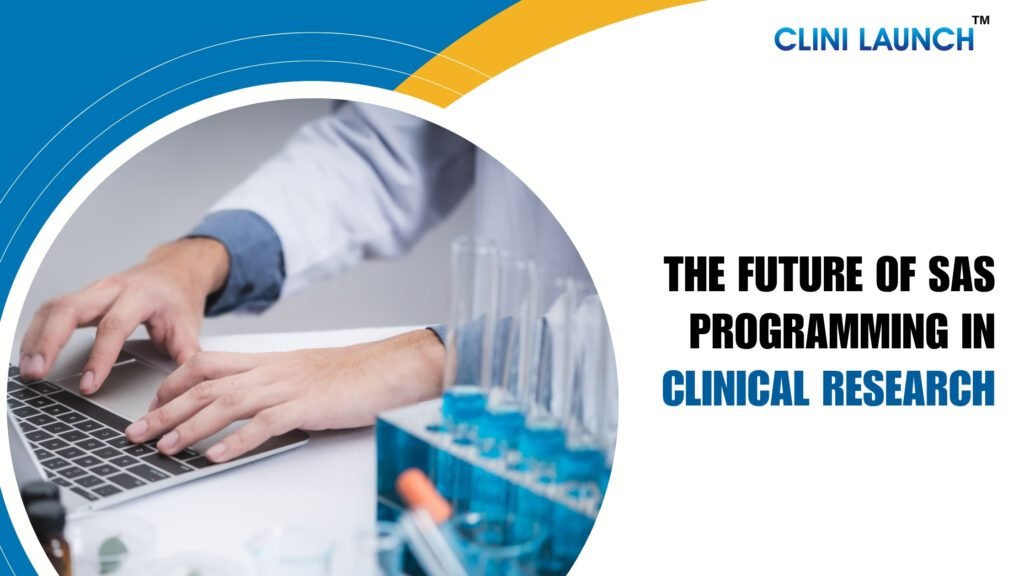
While newer programming languages like R and Python have gained popularity in data science, SAS continues to hold its ground as the undisputed leader in clinical data analysis for regulatory submissions. Its established presence, robust validation, and regulatory acceptance ensure its continued relevance for the foreseeable future.
Moreover, SAS itself is continuously evolving, with enhancements in its statistical procedures, data visualization capabilities, and integration with cloud platforms. Professionals skilled in SAS programming will remain highly sought after, playing a pivotal role in bringing life-saving therapies to patients.
Final Thoughts
Mastering SAS programming is more than just learning software; it’s about acquiring a highly specialized skill set that is critical to the success of clinical research. From understanding the nuances of the Statistical Analysis System to leveraging powerful SAS statistical software for critical insights, your journey into clinical SAS will open doors to rewarding career opportunities.
Whether you’re a fresh graduate, a healthcare professional, or a statistician looking to specialize, a dedicated SAS programming course is your essential steppingstone. The demand for skilled clinical SAS programmers continues to grow, and investing in your education now will yield significant returns throughout your career.
Ready to embark on your journey to becoming a proficient Clinical SAS programmer?
Take the next step towards a fulfilling career in clinical research. Explore comprehensive SAS programming courses and accelerate your expertise with CliniLaunch. Visit CliniLaunch Research today and unlock your full potential!
References
Introduction to SAS programming
https://www.geeksforgeeks.org/introduction-to-sas-programming
What is SAS: Certification, Courses, Career, Salary, Admission & Fees

